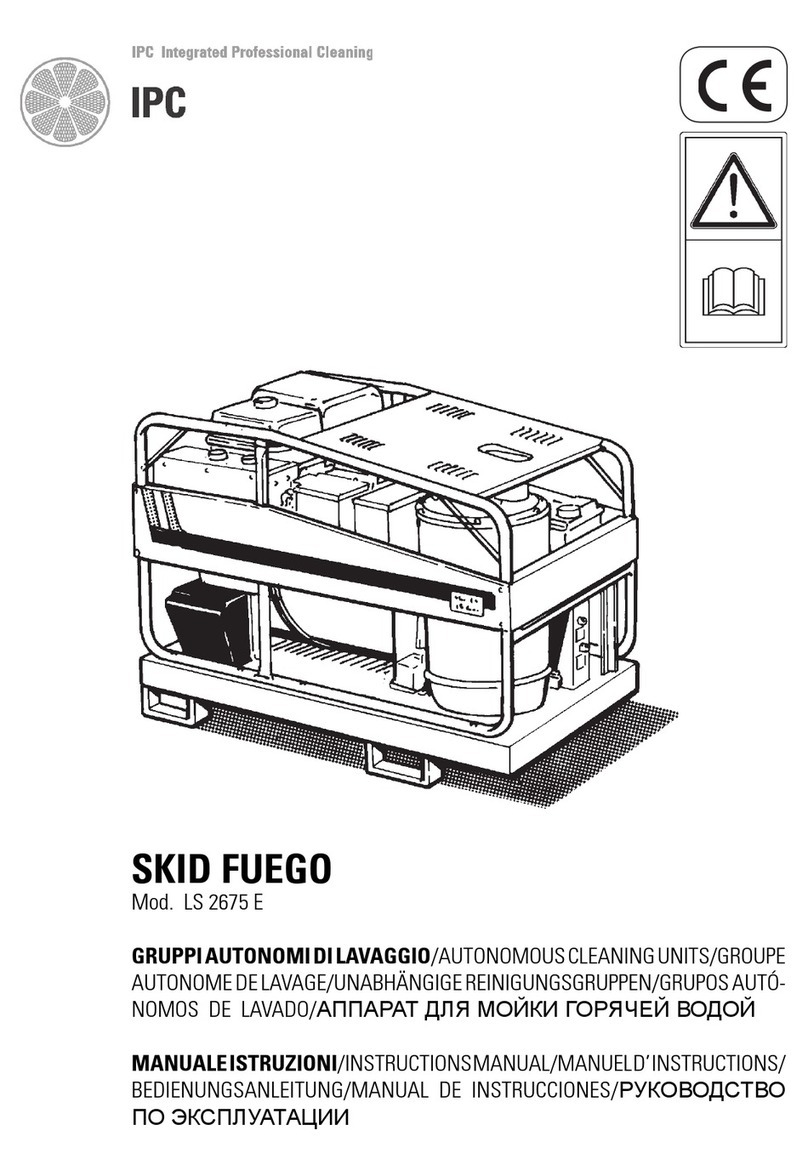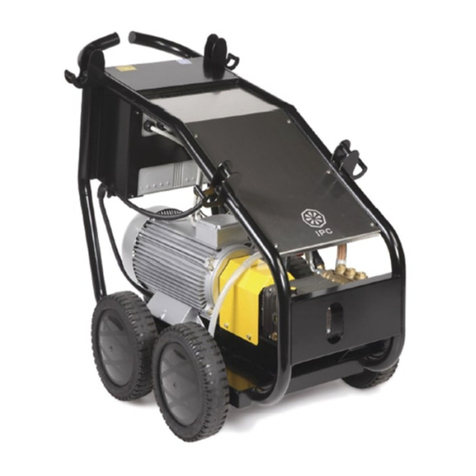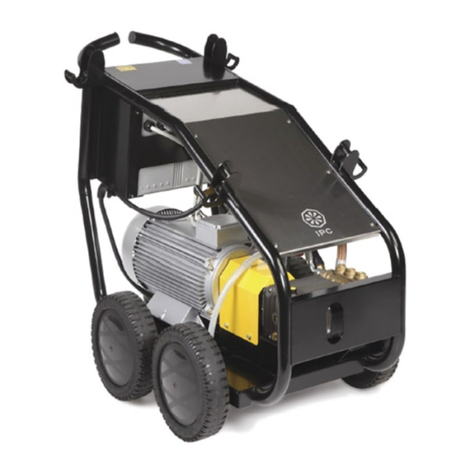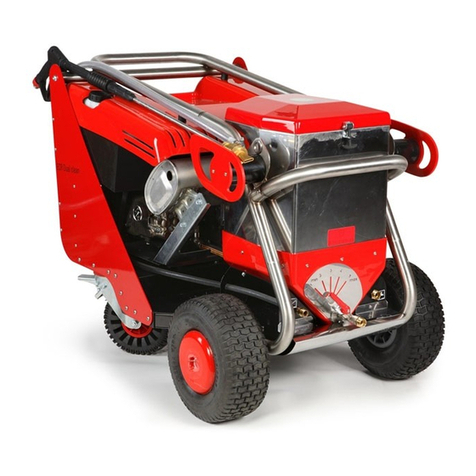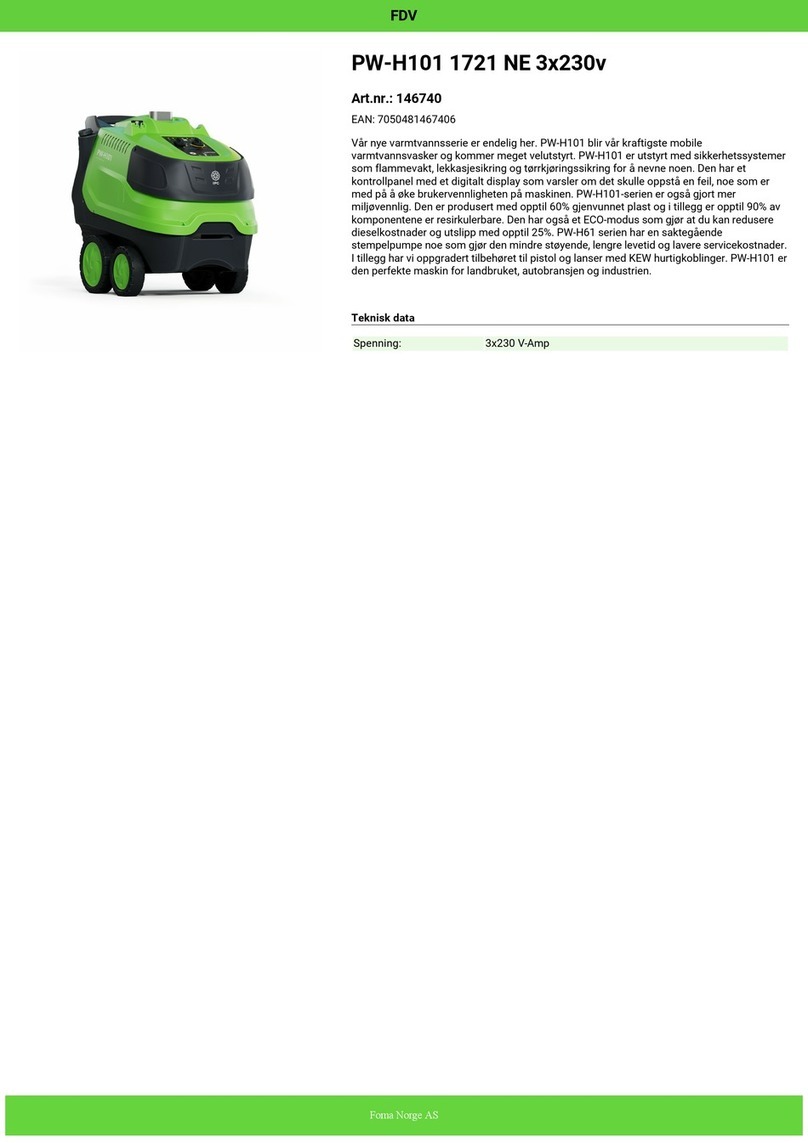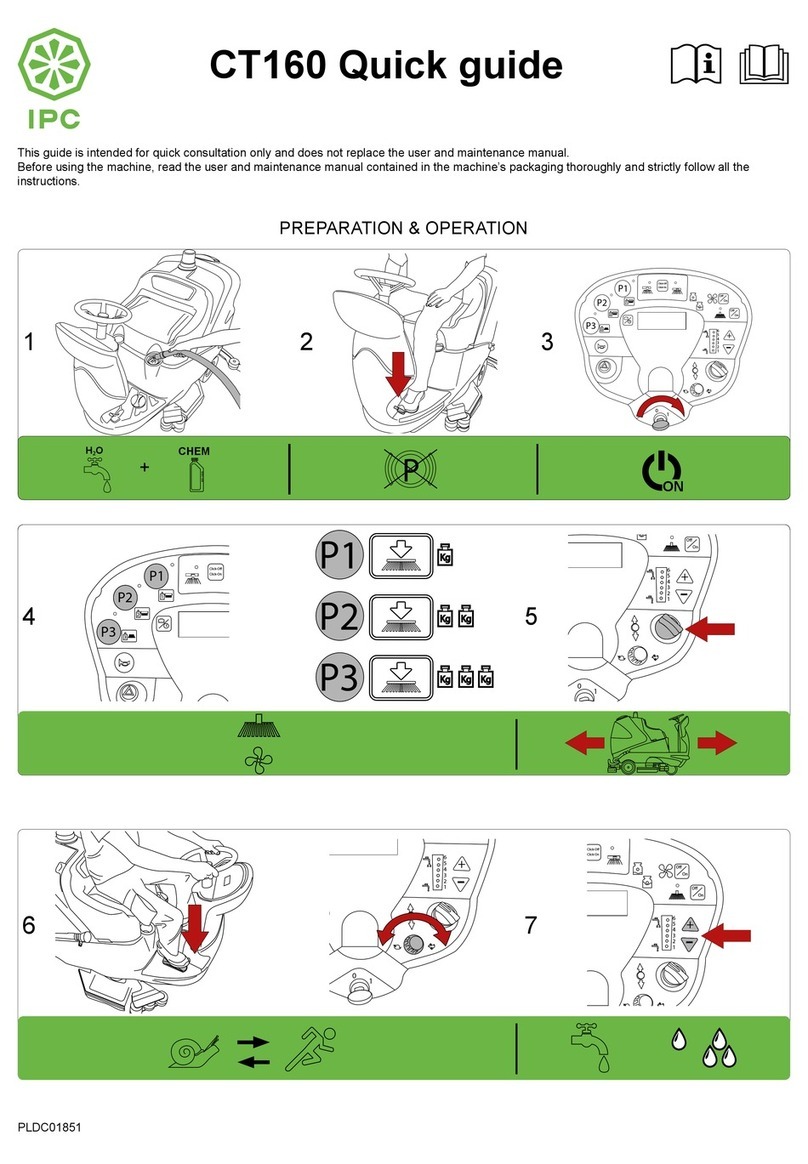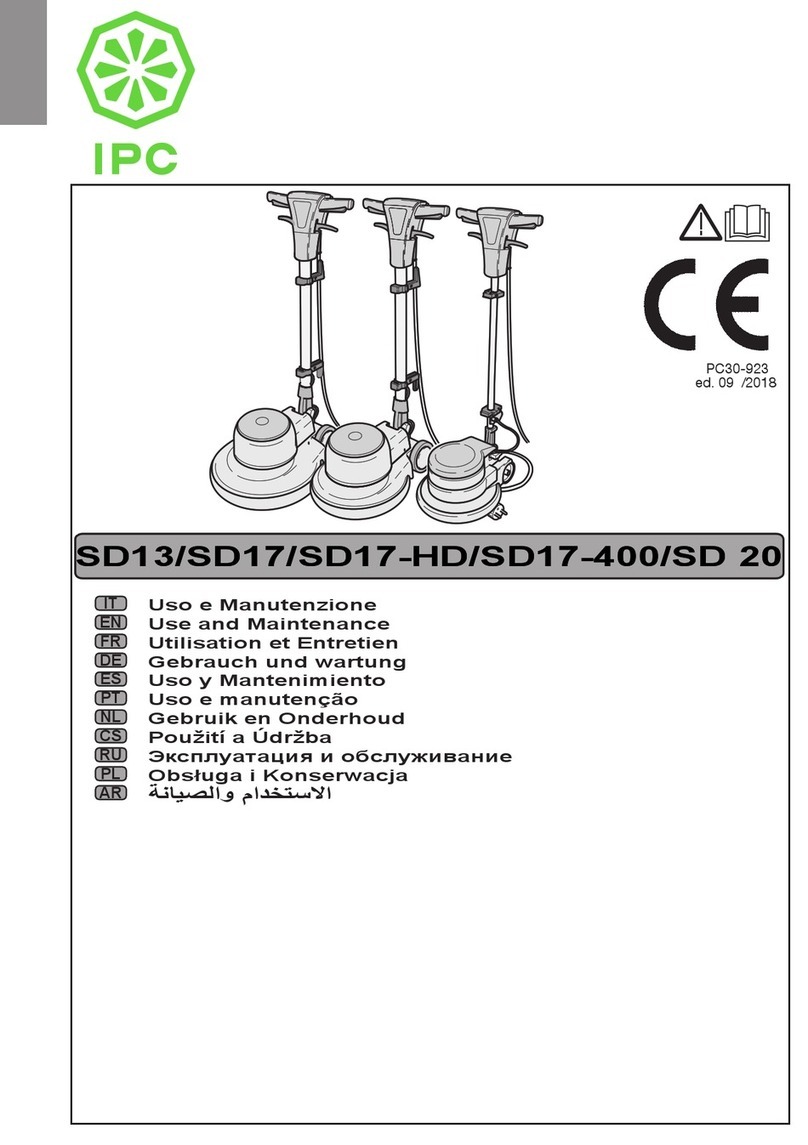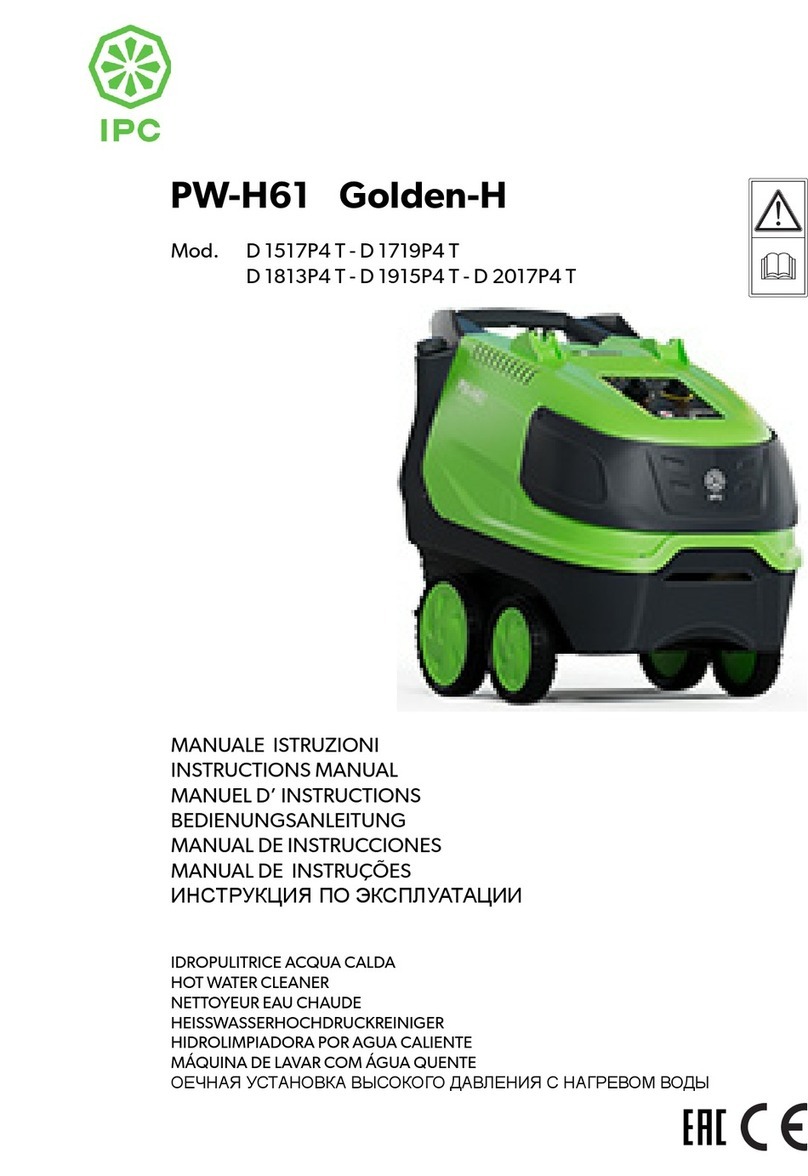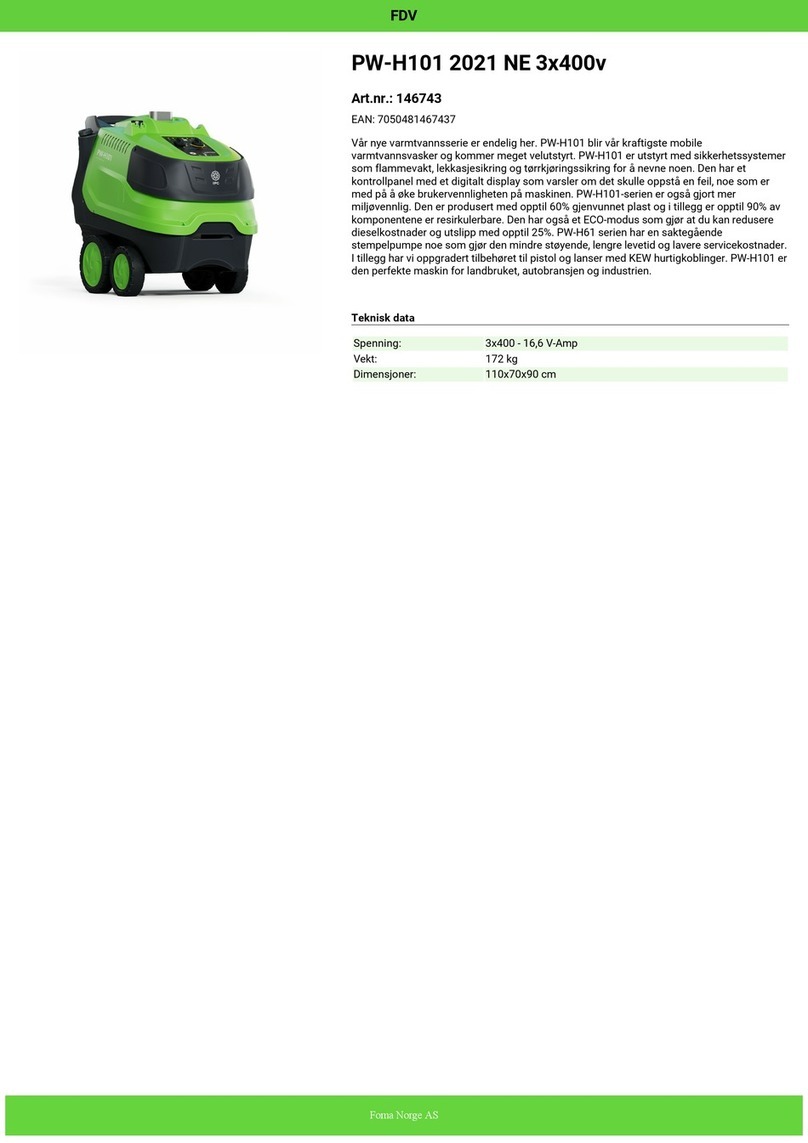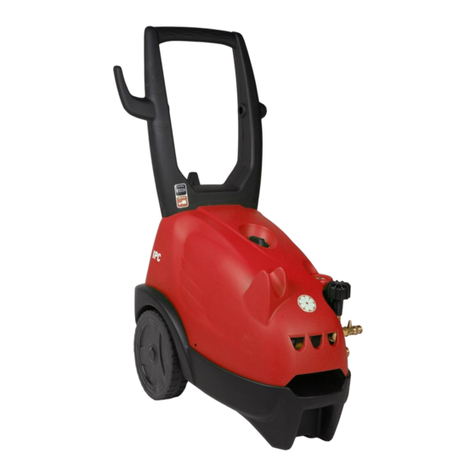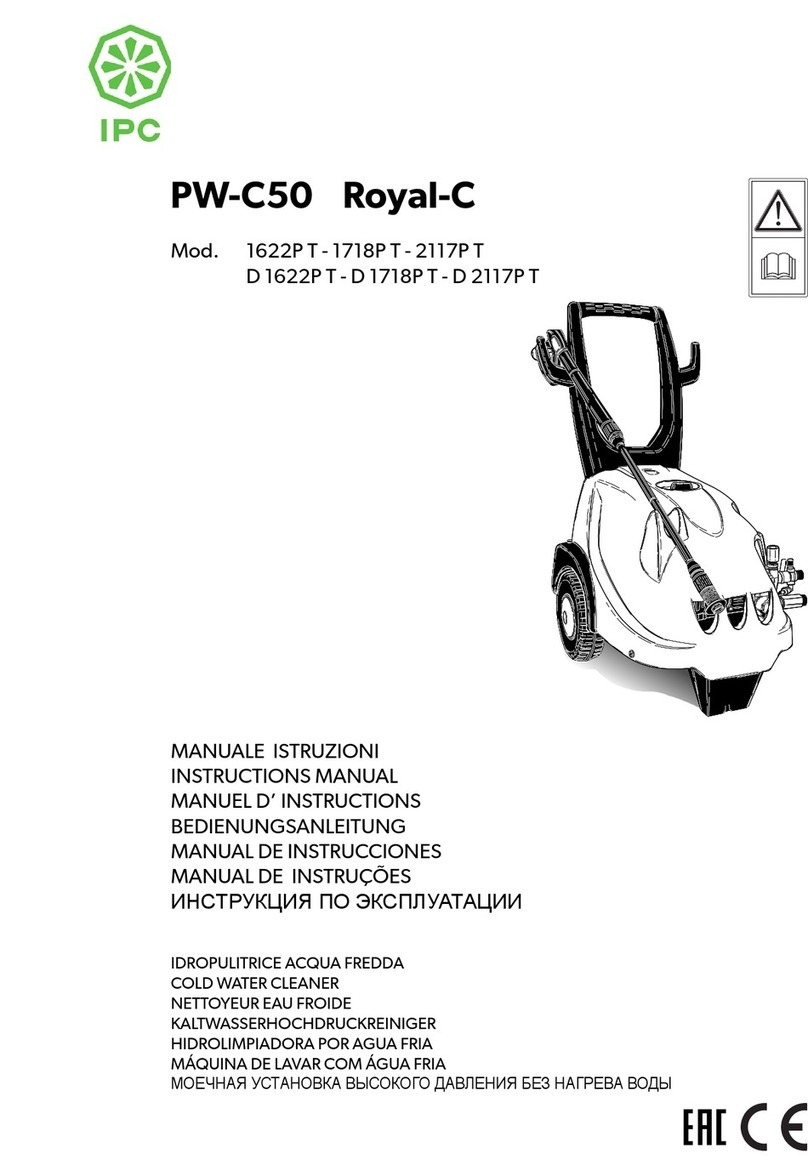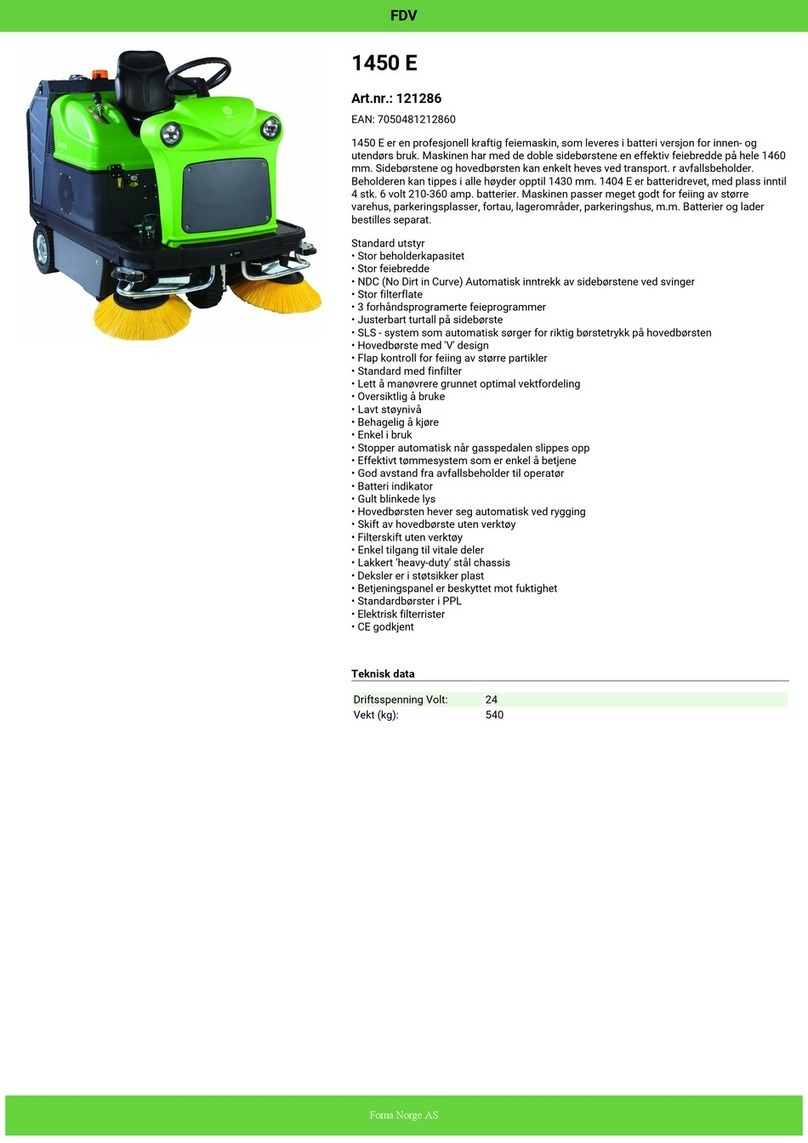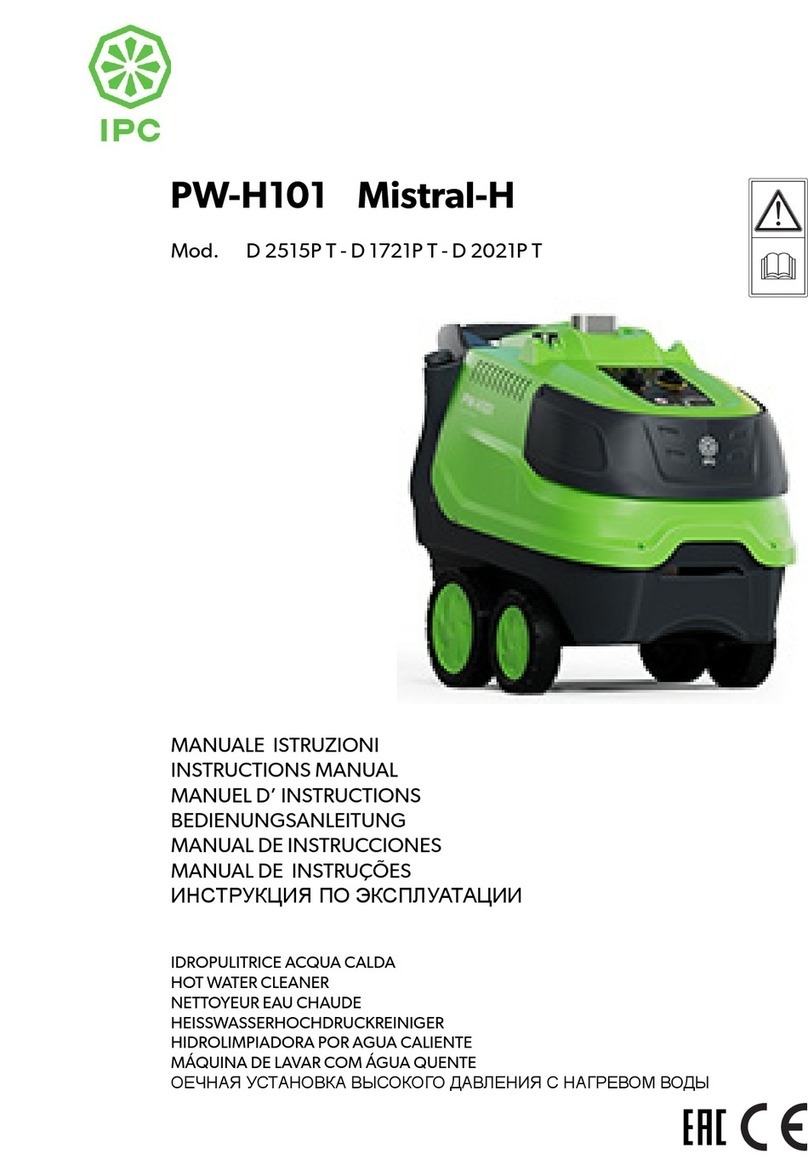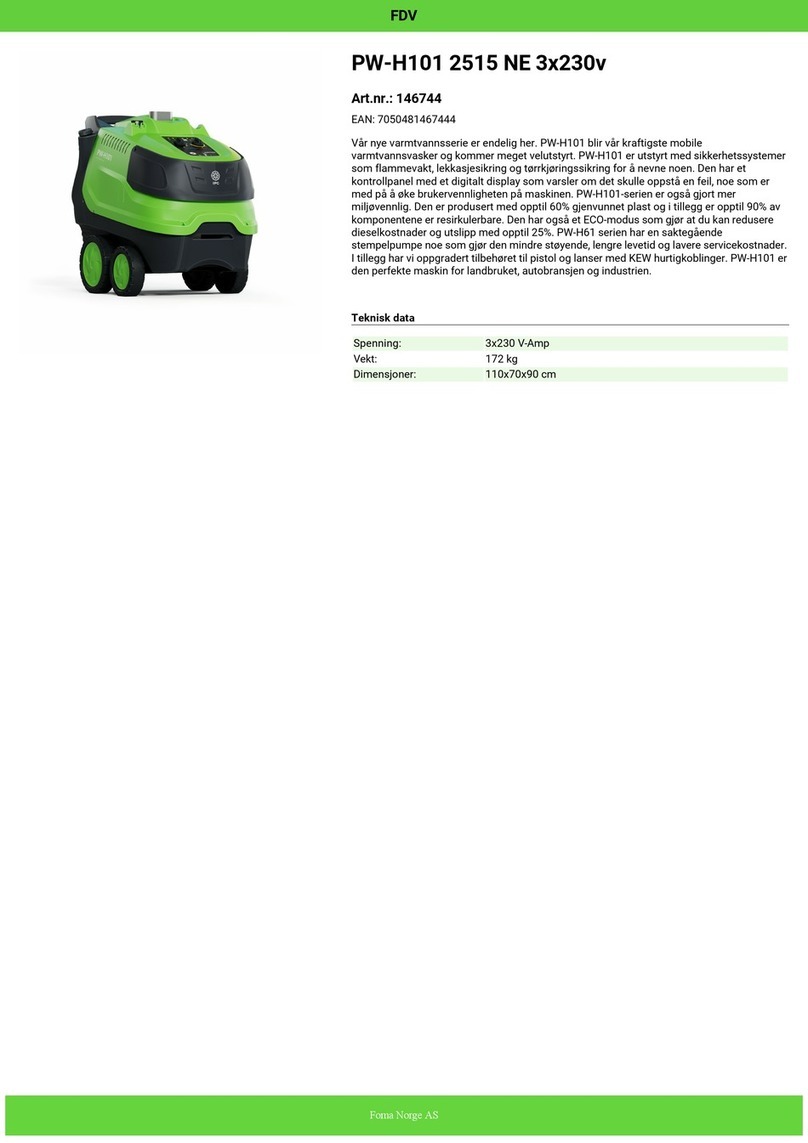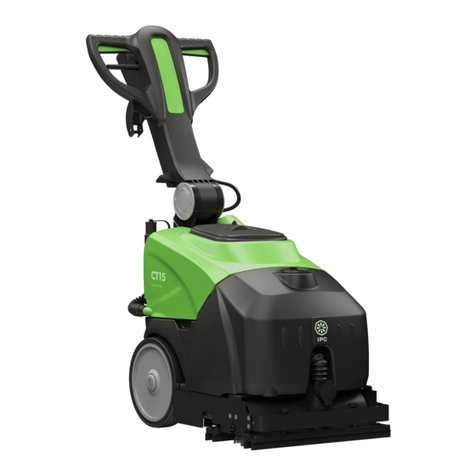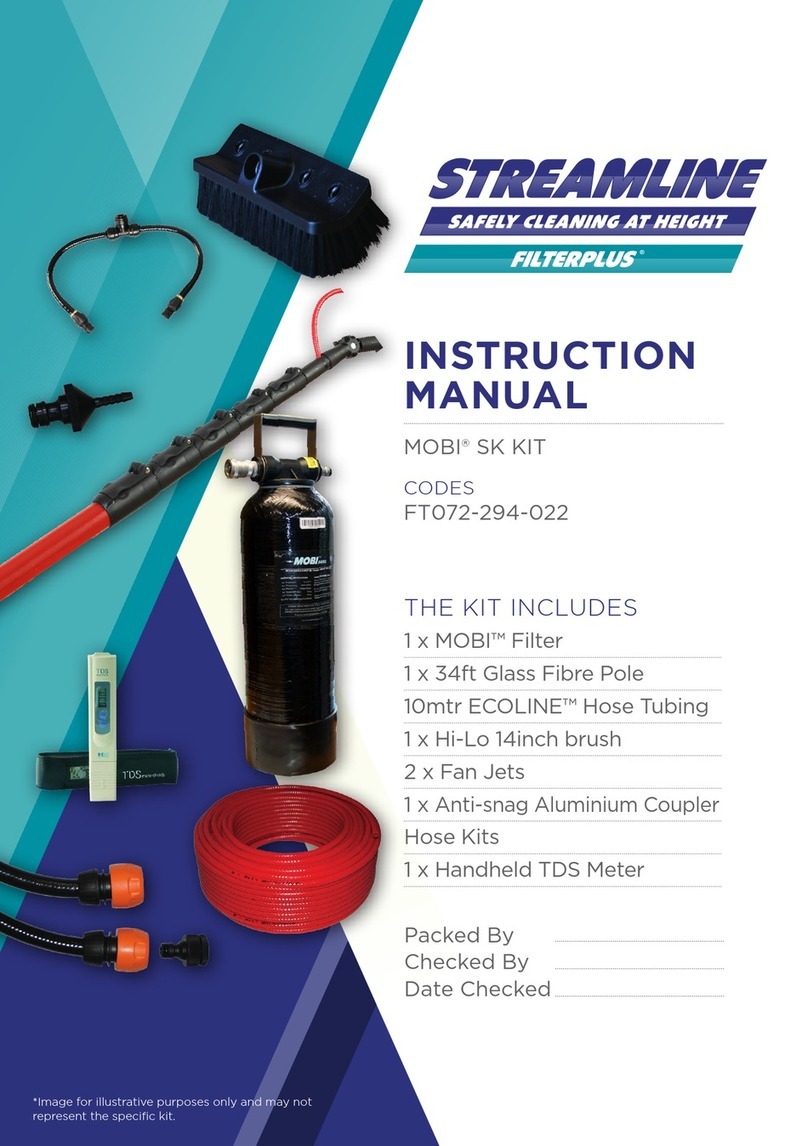
Attention! There is a risk of squashing fingers if closing the top lid. A gas pressure
spring makes ensure that from a special point on the tank lid closes
automatically and is lying flat on the water tank.
4.8 After cleaning operations have finished, the machine should be cleaned all over (not
wash down with a water-hose) and the tank has to be rinsed out.
4.9 Our machines are fitted with a quick change system for the brushes.
Changing of brushes:
1. Switch off the brush motors and lift the brush head with the brush switch.
2. Press the white switch on the switch board for a short while, through it the brush
motors turn the other way round and the brushes remove automatically.
3. Remove the old brush from underneath the brush-head and place the new brush,
roughly in the middle of the brush-head, and directly under the bayonet fitting.
4. Lower the brush head by pressing the switch with the brush icon, the brush motors
starts if the brush head has reached its lower position and fitts the brush
automatically.
5. Raising the brush-head will then ensure that the new brush is correctly fitted, i. e.
it will not fall off, if it does repeat steps 1, 2, 3 and 4.
4.10 The key switch should be switched off before connecting machine and charger (plug
under the seat plate over the battery compartment). After 15 seconds the charger
switches on and the charging process starts.
Important! Before putting your battery machine into service, please make sure you
have read our enclosed leaflets:
- Special Instructions for the Use of Battery Type Machines and Chargers.
- Description resp. Operating Instructions for the battery charger to be utilised.
- Operating Instructions and /or servicing schedule for the battery.
4.11 In order to avoid any build-up of gas inside the machine, the seat plate over the battery
compartment must be filted whilst charging is in progress.
5. Operational errors and how to rectify them
5.1 The water is not running.
- Check the fuse of water pump.
- Operate the knob of poti clockwise.
- Clean the filter in the clean water tank.
- Fill up the clean water tank again.
- Check feed pipes for any possible kinks.
- Release operating cutout key.
- Check the function of the pump.
Attention! The pump head is fitted with a sieve. If necessary this sieve should be
cleaned.
5.2 The vacuum motor is not running.
- Check the automatic circuit breaker of the vacuum motor.
- Clean the recovery tank where the electrodes are situated and the electrodes
themselves.
